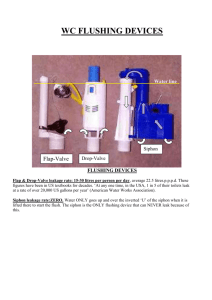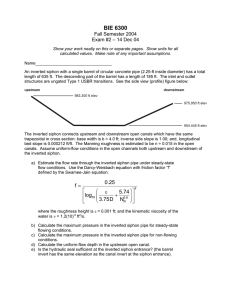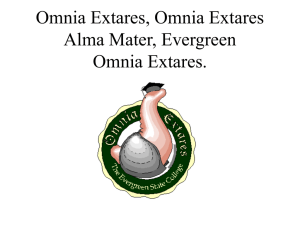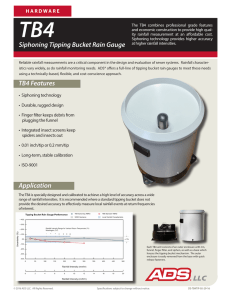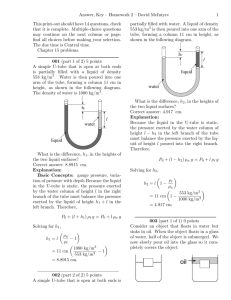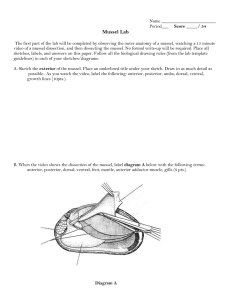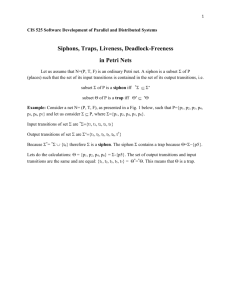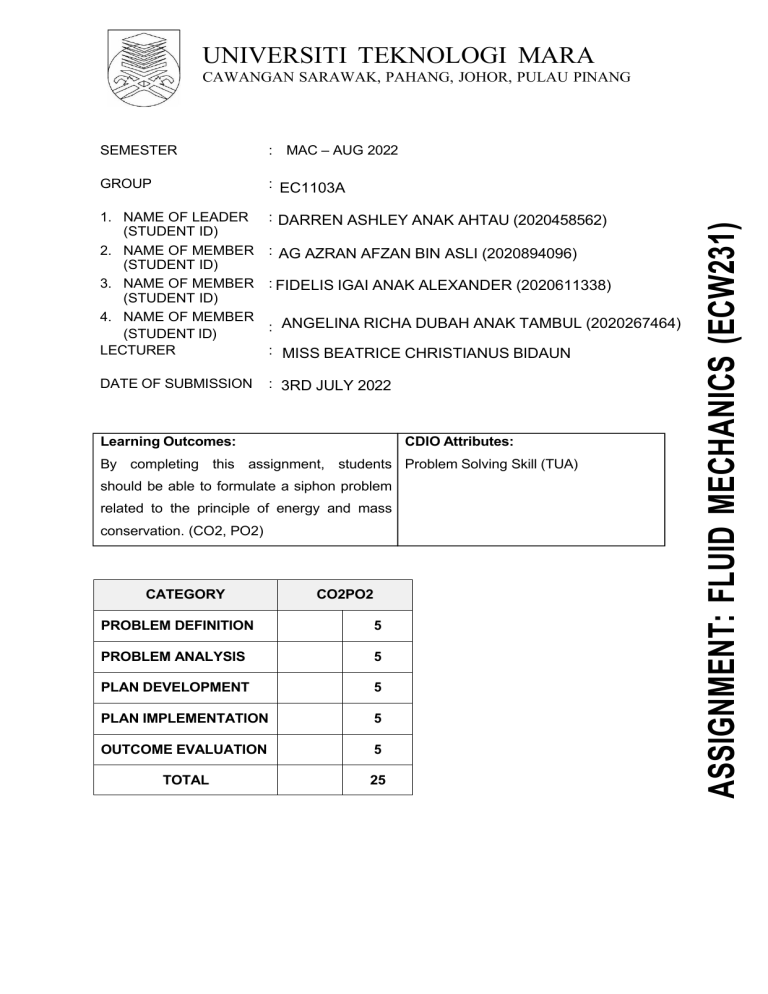
UNIVERSITI TEKNOLOGI MARA SEMESTER : MAC – AUG 2022 GROUP : EC1103A 1. NAME OF LEADER (STUDENT ID) 2. NAME OF MEMBER (STUDENT ID) 3. NAME OF MEMBER (STUDENT ID) 4. NAME OF MEMBER (STUDENT ID) LECTURER : DARREN ASHLEY ANAK AHTAU (2020458562) DATE OF SUBMISSION : 3RD JULY 2022 : AG AZRAN AFZAN BIN ASLI (2020894096) : FIDELIS IGAI ANAK ALEXANDER (2020611338) : ANGELINA RICHA DUBAH ANAK TAMBUL (2020267464) : MISS BEATRICE CHRISTIANUS BIDAUN Learning Outcomes: CDIO Attributes: By completing this assignment, students Problem Solving Skill (TUA) should be able to formulate a siphon problem related to the principle of energy and mass conservation. (CO2, PO2) CATEGORY CO2PO2 PROBLEM DEFINITION 5 PROBLEM ANALYSIS 5 PLAN DEVELOPMENT 5 PLAN IMPLEMENTATION 5 OUTCOME EVALUATION 5 TOTAL 25 ASSIGNMENT: FLUID MECHANICS (ECW231) CAWANGAN SARAWAK, PAHANG, JOHOR, PULAU PINANG INTRODUCTION Figure 1.0 A siphon An inverted U-shaped pipe serves as the syphon. It has two ends, the long end being one and the short end being the other. At the lower level, the long end is immersed within the container. The shorter end is dipped into the higher-elevation container. The siphon working principle is when the air pressure at the bend of the syphon is reduced when a particular volume of water passes over the curve of the syphon and is pulled down by gravity onto the longer leg. As a result, the air pressure on the other side of the syphon increases and pushes the remaining water up and over the syphon bend. Siphon usage or application: This is employed in the following circumstances: 1. To move water across a hill or ridge from one reservoir to another reservoir. 2. To remove the liquid from the tank's lack of an exit. 3. To remove all the water from a waterway that lacks an exit sluice. The siphon principle is useful to civil engineers. It is applied in pipes that carry water from an aqueduct across a valley to a population center and in various industrial piping systems. FLOWCHART Design Analysis Free-body Diagram : Questions 1. From the design analysis, what is the pressure at the crest of the siphon? Pressure =hρg = 20×1000×9.81 = 196 200 N/m² 2. From the design analysis, what is the design discharge of the siphon? Friction losses : 1.9 (0.019)( = 2.66 20 ) 0 .5 Design Discharge : Q 2 9.81 23 0.5 (0.5) 2 ( ) 4 2.66 = 2.55674 3. What is the actual discharge of the siphon? The actual discharge of the siphon is 264.6cm³ 4. Evaluate whether the siphon system can reduce the water level in the bucket by 30%. Initial water level in the top bucket, V1 = 1322.5 cm³ Final water level of the top bucket, V2 = 1058 cm³ (V 1 V 2) 100% Percentage of water = 1322.5 = 20% In conclusion, the siphon system that we made can only reduce up to 20% of water level in the bucket. DISCUSSION Two main hypotheses explain how siphons cause liquid to move upward against gravity, without the assistance of a pump, and just using gravity. Since ancient times, the conventional view has been that the liquid on the siphon's exit side is drawn down by gravity, which causes the pressure at the siphon's top to decrease. CONCLUSION Water naturally flows from a higher level to a lower level, as is common knowledge. In our experiment, the water rises first before spilling over the top container's rim and flowing into the lower container. The aim of this experiment has been achieved. References 1. https://www.riansclub.com/siphon/ 2. https://cdn.ymaws.com/www.eps.org/resource/collection/016775D4-8888474D-887F-3E33AEA5E6D0/EPSPED_MUSE_Potter_sip.pdf 3. https://www.physicsforums.com/threads/analysis-design-of-asiphon.322416/
